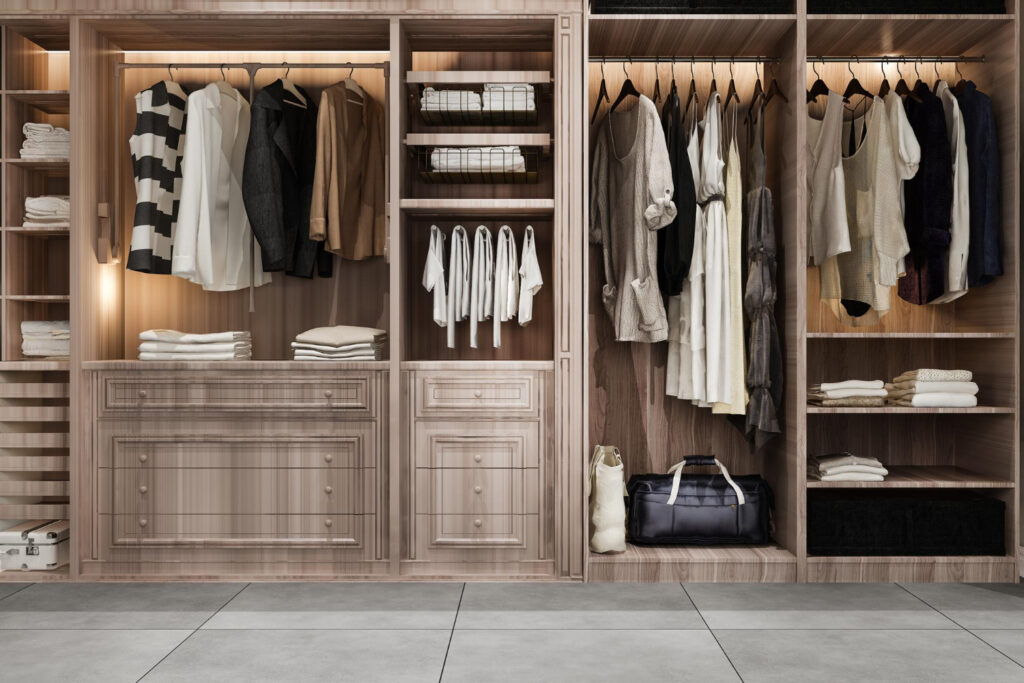Creating a minimalist wardrobe is not just about having fewer items in your closet; it’s about maximizing efficiency, reducing decision fatigue, and fostering a sense of calm and order in your daily routine. A minimalist wardrobe, often referred to as a capsule wardrobe, focuses on quality over quantity, versatility, and personal style. Here is a comprehensive guide to help you create a minimalist wardrobe that reflects your style while ensuring functionality and sustainability.
Understanding Minimalism in Wardrobe
Minimalism in fashion is characterized by simplicity, clean lines, and a monochromatic palette with strategic use of color. The goal is to own fewer garments that serve multiple purposes, are high quality, and reflect your style. According to a study by the University of Massachusetts, a person only wears 20% of their wardrobe regularly. This statistic underscores the practicality of a minimalist wardrobe, aiming to make that 20% your entire closet, ensuring everything you own is worn and cherished.
Steps to Create a Minimalist Wardrobe
Creating a minimalist wardrobe involves a deliberate approach to fashion, focusing on simplifying your closet while retaining versatility, quality, and a sense of personal style. Here’s a detailed breakdown of the steps to help you curate a minimalist wardrobe that suits your lifestyle and preferences.
1. Assess Your Current Wardrobe
Begin by taking inventory of what you currently own. This step involves:
- Sorting Through Your Items: Remove everything from your closet and drawers. Lay each item out so you can see everything you have. This visibility is crucial for making informed decisions about what to keep.
- Evaluating Each Piece: For each item, consider its frequency of use, fit, condition, and whether it reflects your current style. This process helps identify which pieces are essential and which are taking up unnecessary space.
- Understanding Your Needs: Note any gaps in your wardrobe. For instance, if you have numerous formal wear items but rarely attend formal events, you may need to adjust your collection to better suit your everyday needs.
2. Define Your Style
Defining your style is key to creating a wardrobe that feels both personal and practical. This step involves:
- Identifying Preferences: Look for patterns in the items you love and wear often. Do they share a similar aesthetic, color scheme, or fabric?
- Creating a Mood Board: Use platforms like Pinterest to collect images that reflect your ideal wardrobe. This visual reference can guide future purchases and help maintain your style focus.
- Setting Guidelines: Based on your preferences, set some guidelines for your wardrobe. This might include a color palette, preferred fabrics, or specific styles that suit your lifestyle (e.g., casual, or professional).
3. Purge Unnecessarily
Reducing the number of items in your wardrobe is often the most challenging step but is crucial for achieving minimalism:
- The KonMari Method: Marie Kondo’s approach of asking whether an item “sparks joy” can be a helpful criterion. If something doesn’t make you happy or isn’t used, it’s time to let it go.
- Donation and Recycling: For items in good condition that no longer fit your lifestyle or taste, consider donating them to charity or selling them. Items that are worn out can often be recycled.
4. Prioritize Quality Over Quantity
Investing in fewer, but higher-quality items, ensures longevity and reduces the need for frequent replacements:
- Research Brands: Look for brands known for their durability and ethical manufacturing processes.
- Understand Fabrics: Learn which materials are most durable and appropriate for your lifestyle. For instance, natural fibers like wool, cotton, and linen tend to last longer than many synthetic alternatives.
5. Choose Versatile Pieces
Selecting items that can be easily mixed and matched will maximize outfit possibilities:
- Basics are Key: Items like a well-fitting pair of jeans, a classic blazer, or a simple white T-shirt can serve as the foundation of numerous outfits.
- Neutral Colors: While a minimalist wardrobe doesn’t have to be entirely black and white, neutral colors are generally easier to combine. However, adding a few pieces in your favorite colors can inject personality into your wardrobe.
6. Implement a One-In, One-Out Policy
To maintain a minimalist wardrobe, adopt the habit of removing an item whenever you add something new. This practice helps prevent clutter from accumulating again.
7. Seasonal Rotation
For those living in areas with distinct seasons, rotating your wardrobe can keep it manageable and relevant:
- Storage Solutions: Use under-bed storage or vacuum-sealed bags to store off-season clothing.
- Seasonal Review: Each season, re-evaluate your wardrobe, removing items that no longer fit, have worn out, or don’t align with your style.
Benefits of a Minimalist Wardrobe
Reduced Decision Fatigue: With fewer choices, selecting an outfit becomes simpler and quicker, offering a smoother start to your day.
Sustainability: A minimalist approach encourages sustainable fashion practices by reducing consumption and waste. A report by the Ellen MacArthur Foundation highlighted that more than $500 billion of value is lost every year due to clothing underutilization and the lack of recycling.
Cost Efficiency: Investing in fewer, high-quality pieces can save money in the long run, as you’ll need to shop less frequently for replacements.
Challenges and Solutions
Adapting to Minimalism: Transitioning to a minimalist wardrobe can be challenging. Start slowly, gradually removing items, and resist the urge to purchase new ones impulsively.
Maintaining Variety: To keep your wardrobe interesting, focus on accessories. Scarves, jewelry, and belts can add variety to your outfits without overcrowding your closet.
READ ALSO: How to Choose Hair Products for Curly Hair
Conclusion
Creating a minimalist wardrobe is a personalized process that requires time and thoughtful consideration. It’s not just about achieving a certain number of items but about cultivating a collection that reflects your lifestyle, values, and personal style. By focusing on quality, versatility, and personal expression, you can create a sustainable wardrobe that simplifies your daily routine, reduces decision fatigue, and brings joy through the simplicity and intentionality of your choices.










